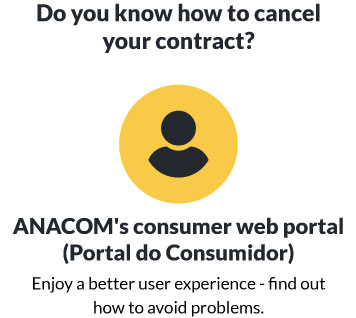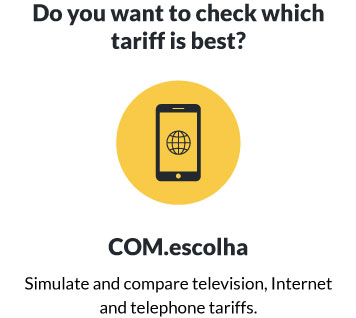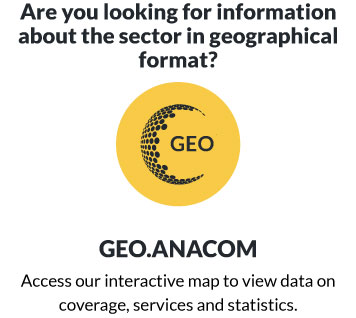At the end of the 3rd quarter of 2008 there were 14.541 million Mobile Telephone Service subscribers in Portugal, 1.5 per cent more than in the previous quarter and 12.4 per cent more than in the same quarter of the previous year.
The significant growth of post-paid cards, both in quarterly terms, 4.1%, and in annual terms, 29.9%, to reach 3.671 million, means that this type of customer now represents 25.2% of the total number of subscribers. This upward trend is associated with the sign up of subscribers to UMTS based data services which, typically, involve the payment of a monthly charge.
The proportion represented by prepaid card subscribers stands at 74.8 per cent of the total number of subscribers. The rates of growth seen for this type of card have consistently come out below the rates for post-paid cards, growing by 0.7 per cent in quarterly terms and 7.5 per cent in annual terms.
In September the penetration rate of the land mobile service rose to 137 per 100 inhabitants.
Interpretation of the figures given for MTS subscribers and penetration rate should take account of the fact that there are users who have more than one card for accessing the service and that there are SIM cards used exclusively for Internet access and data services; additionally there are active cards used in machines, equipment and vehicles, as well as cards for corporate use.
In the third quarter the number of users with access to UMTS services totalled 3.968 million, 27.3% of the total of mobile service subscribers. The number of active users reached 1.062 million, up 10 per cent on the previous quarter and up 79.3% year-on-year to represent 6.3% of all mobile subscribers.
The UMTS penetration rate in September was 37.4 per 100 inhabitants.
During the third quarter, mobile telephone service subscribers made over 1.97 billion calls, 7.4 per cent more than in the previous quarter. In comparison to the third quarter of 2007, there was an increase of 8.2 per cent in the number of calls. An acceleration in the growth of intra-network traffic, was seen this quarter, impacting the level of average traffic per subscriber and probably driven by the launch of specific offers which allow free calls to be made between subscribers.
Over the same period, the number of calls received on the mobile network was around 1.95 billion, an increase of 6.1 per cent over the previous quarter and 7.6 per cent year-on-year.
Mobile-fixed traffic saw a further decline, accelerating the downward trend seen over recent years.
The number of conversation minutes originating on mobile networks totalled 4 billion minutes, an increase of 9.5 per cent over the previous quarter. Compared to the same period of the previous year, the number of minutes rose by 12.4 per cent, 2.3 percentage points above the average of the previous year and 1.3 points lower than the growth rate for the number of subscribers.
The number of minutes terminated on mobile networks totalled over 4 billion minutes, an 8.6 per cent increase over the previous quarter.
During the period being reported, each subscriber made, on average, 45 calls each month, 2.5 less than during the previous period. Around 31 of the calls made were within the caller's own network.
The average time of conversation by subscriber rose significantly, to around 93 minutes per month (7 minutes more than in the previous quarter). Subscribers are speaking, on average, for 65 minutes with other subscribers of the same network, 17 minutes with subscribers of other mobile networks, 6 minutes with fixed network customers and 5 minutes to international destinations.
The number of written messages sent increased by 3.8 per cent. The average number of messages sent per subscriber reached 140 per month, an average of over 4 messages per day.
With respect to MMS, around 22 million messages were sent over the period, 14.8 per cent more than in the previous period. Year-on-year the number of multimedia message sent by users of this service has grown by 83.5 per cent.
Meanwhile, 1.5 million video-calls were made during the quarter, an increase of 22.1 per cent over the previous quarter and a year-on-year increase of 61.4%. The conversation time associated with these calls rose by around 50.4 per cent over the previous quarter.
Prices below average
In August 2008, the prices in Portugal were below the average of the set of 19 EU countries which are also OECD members.
Only in the case of pre-paid plans, which represent 75% of the Portuguese mobile market, prices in Portugal are significantly below average, giving Portugal a place between 4th and 6th position in the ranking, even considering VAT and purchasing power parity. In this case, with respect to low consumption, the prices were 14.8% below average, a figure which rises to 23.2% if purchasing power parity is not considered. In the case of medium consumption the divergence is greater. Prices are 30.3% below the average, even when taking ppp into consideration; this divergence widens further in the case of high consumption, increasing to 31.1% below the average.
In terms of post-paid plans, and in the case of low consumption, the prices are 1.1% above the average; this increases to 7.5% for medium consumption and 13.2% for high consumption. When VAT and purchasing power parity is taken into consideration the difference is greater.
However, taking all the price plans overall, Portugal again has good results compared to the average. In fact it has prices that are 2.1% below average in the case of low consumption and 6.2% below average in the case of medium consumption. Prices are only above average for high consumption.
Consult:
- Postal services https://www.anacom.pt/render.jsp?categoryId=277884




